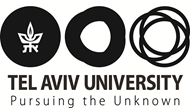Curatorial Text
Re: Empathy
Ever since October 7, we have been engulfed by an overwhelming experience of rupture, strain and pain. Many Israelis are confronting an unfamiliar sense of helplessness. Where can one find solace, and how can one imagine hope in such a cruel reality? Can art-making offer a space for processing and containing such an experience? The exhibition “Re: Empathy” highlights our ability to care for one another, and the important and rewarding experience of drawing together. This exhibition, like those preceding it, involves a dialogue with the university’s scholarly community – this time concerning the themes of empathy, social behavior and responses to pain.
Although we all share a need to receive empathy, there are situations in which it is very difficult for us to provide it for others. When we observe another person in pain, our brain reacts just as it does when we ourselves experience the same pain. Yet when we are surrounded by so much suffering, and are under extreme danger, our sense of empathy is often limited to our affinity group. Since we perceive the group as protecting us, we provide ample empathy to its members, while significantly limiting our empathic response to those external to it. The exhibition explores how does indifference to the pain and suffering of those outside our immediate group of identification impact our humanity? Such alienation may lead to polarization within Israeli society, as well as to the dehumanization of those outside of it.
Empathy is the capacity to understand the other’s point of view, to experience their feelings, and to wish for their condition to improve. It is not unique to humans, and is shared by many species of animals. Empathy is a natural, fundamental capacity inherent to each and every one of us. The “empathy muscle” is extremely flexible; as we bring more attention to it and to the importance of our social attachments, we can strengthen our capacity for empathy.
The exhibition title “Re: Empathy” highlights the notion of responsiveness to others, and our ability to connect with them, bring our attention to them, and respond to their appeals. When we respond to others in this manner, the brain’s reward system is activated, so that satisfaction is experienced both by the one receiving care and by the one who is offering it. Even when we feel unable to offer concrete help, we can let the other feel that they are not alone, and that there is someone sharing in, and validating, their experience. Empathy is, therefore, helpful in and of itself. As the works in the exhibition reveal, another person’s distress renders our emotional boundaries more flexible; an encounter with the voices of strangers prompts a non-judgmental attitude; the reflection of the self by the other enables us to overcome fear of the unfamiliar; laughter provokes an unmediated connection, and so forth. In attending to these experiences, visitors to the exhibition are invited to reflect on the power of art to offer an alternative to polarizing discourses, to suspend social biases, and to envision a different reality.
-
Exhibiting artists (in alphabetical order): Ori Gersht | Guy Hadany | Dor Zlekha Levy | Jonathan Ron | Lee Yanor | Netaly Aylon.
-
Curator: Dr. Tamar Mayer
Assistant Curator: Roni Kochavi


